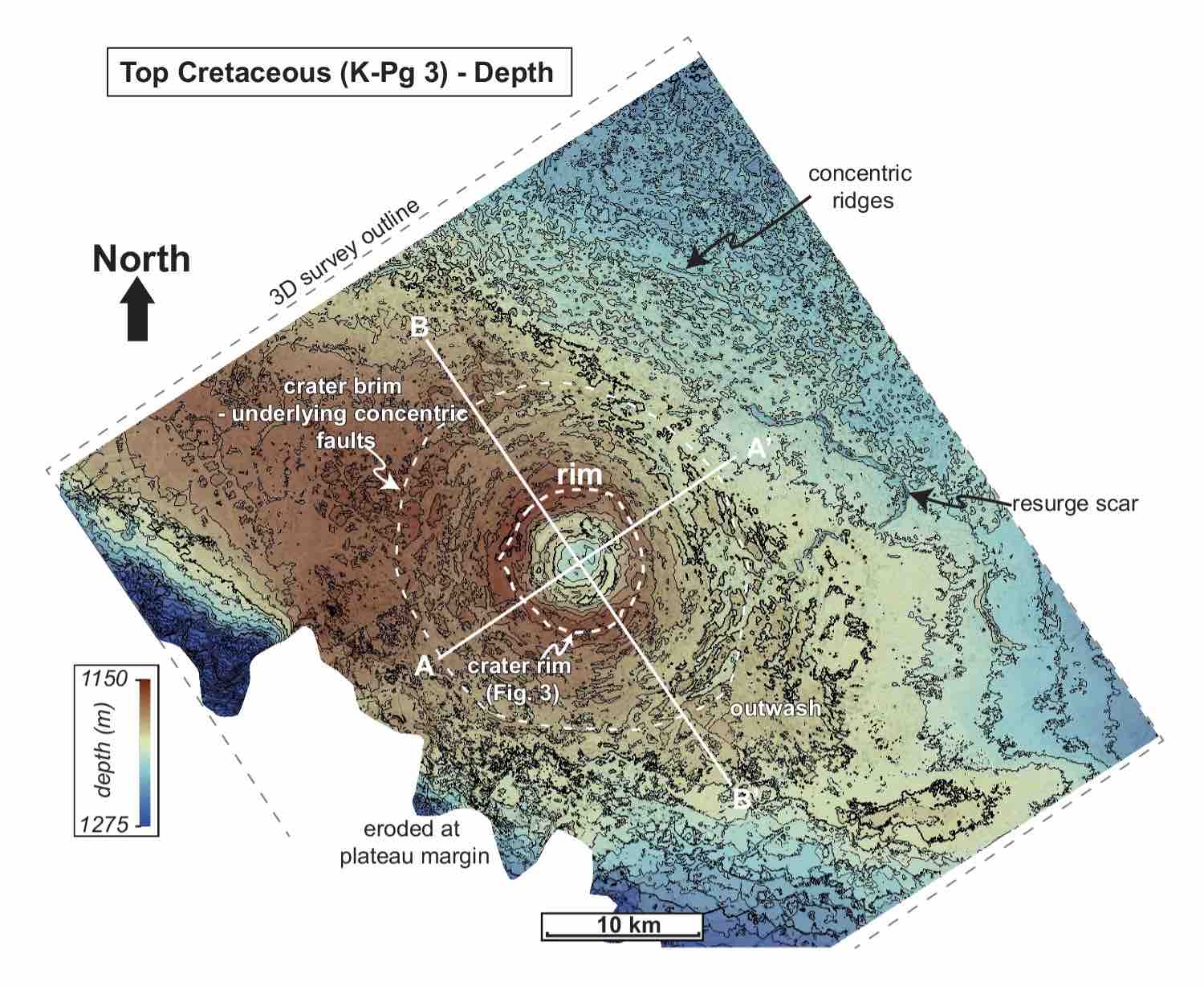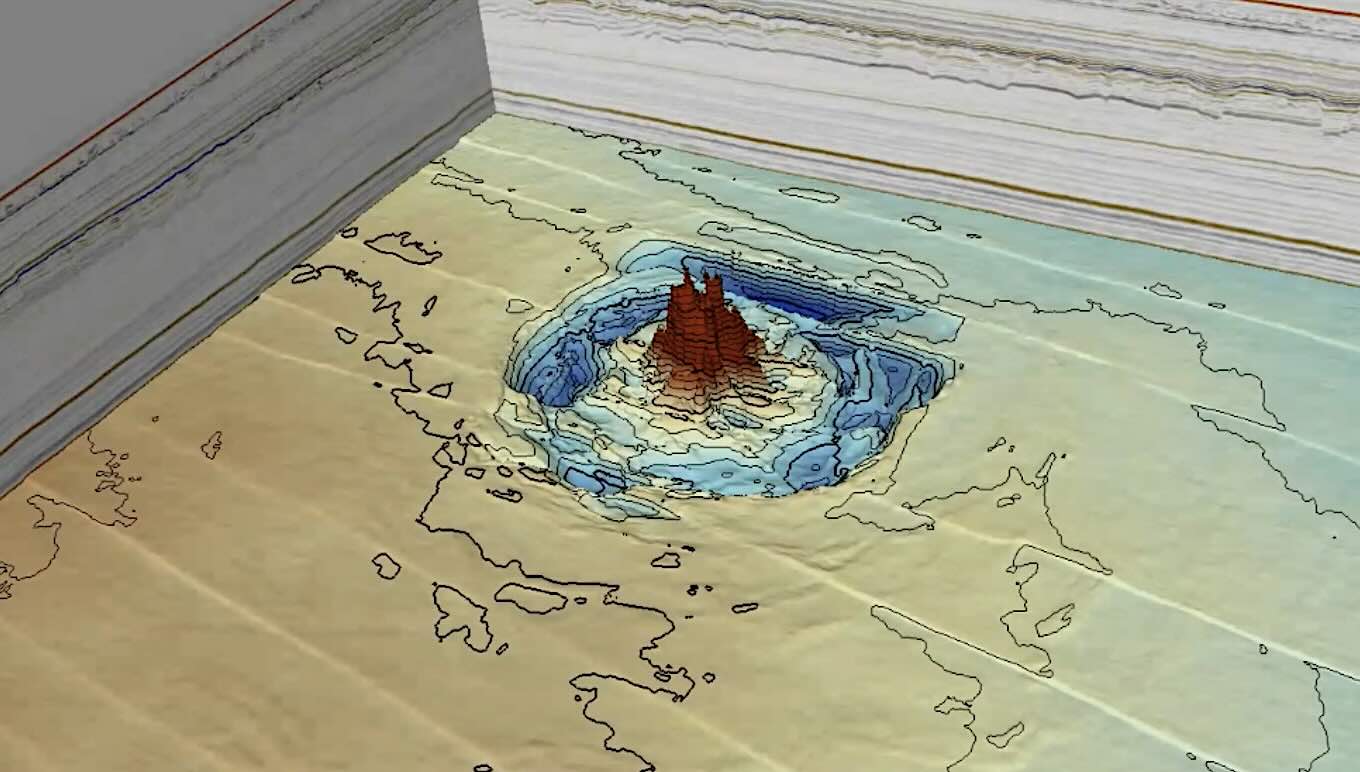66 million years ago, a massive space object collided with Earth, resulting in catastrophic upheaval that fundamentally reshaped the geology of our planet. Despite the magnitude of this ancient impact, evidence of it long remained undetected by scientists from its location 300 meters beneath the Atlantic Ocean.
Now, a series of new high-resolution images are revealing new details about the 66-million-year-old asteroid impact site, known as Nadir Crater, thanks to a research team at Heriot-Watt University. The new findings could deepen our understanding of this ancient event, as well as how impacts with space objects affect the Earth, and what their longer-term consequences might be.
A Discovery at 300 Meters Below
The Nadir Crater, an impact feature roughly 9 kilometers in width, long remained hidden beneath the Atlantic Ocean at a depth of close to 300 meters. Now, with the help of new 3D seismic data, the feature has not only been confirmed as an impact crater, but also one that likely occurred around the same time as the impact that produced the Chicxulub Crater, associated with the extinction of the dinosaurs.
The initial discovery of the Nadir Crater was made in 2022 by Dr. Uisdean Nicholson of Heriot-Watt University using seismic reflection data obtained from the sea floor off the coast of West Africa. Confirmation of the massive crater’s identity with the help of the newly obtained imagery offers additional details about the site, as well as clues to what occurred in the aftermath of the event.


It is believed the impact, which created a huge bowl-shaped depression resulting in upheaval of surrounding rock, likely produced a tsunami of massive proportions, along with widespread geological upheaval as the resulting shockwave produced fluid-like movement throughout the nearby geology.
The huge tsunami would likely have exceeded 800 meters in height, more than twice the current depth of the ocean waters under which the crater is found today.
“The closest humans have come to seeing something like this is the 1908 Tunguska event, when a 50-metre asteroid entered Earth’s atmosphere and exploded in the skies above Siberia,” Nicholson said of the impact that produced Nadir Crater.
The new data that led to these findings was obtained by the global geophysical company TGS, revealing a level of detail rarely seen in past observations of marine craters.
“It’s like going from a grainy ultrasound to a 3D image,” Dr. Nicholson recently said of the new data revealed about the crater he is credited with discovering. The advanced imaging TGS captured of the feature has allowed researchers to virtually remove layers of sediment, revealing the crater’s underlying structure in ways that otherwise would remain impossible.
Despite being concealed at the ocean floor, the Nadir Crater’s location has allowed it to be uniquely preserved, unlike craters found on the surface that become subjected to erosion from weather over long periods, which obscures their appearance. The new imagery of Nadir Crater reveals a rare look at an asteroid impact site in exceptional detail, with elements from the time of its formation tens of millions of years ago remaining intact.
Larger Estimates for the Nadir Impact Revealed
The new data also sheds light on the likely size of the asteroid that produced the crater, which is now believed to have been as much as 500 meters wide, significantly larger than initial estimates had yielded. Prior to its collision with Earth, the massive space rock would have been traveling at speeds close to 72,000 kilometers per hour, producing an impact event that resulted in fault formations on the ocean floor, as well as mudslides and geological changes on nearby landmasses.
To obtain additional information about the nature and scope of this ancient catastrophic event, Nicholson and his colleagues now hope to obtain core samples directly from the impact site by drilling into the seabed within the Nadir Crater. Information contained within these samples could provide crucial information about the pressure conditions resulting from the impact, as well as valuable data on the timeline of events following the impact.
Nicholson says the team has applied to the International Ocean Drilling Programme-3, an international collaboration that aims to perform ocean drilling beginning early next year, about the prospect of drilling at Nadir Crater.
Going beyond just understanding the dynamics of ancient catastrophic events like the ones produced by Nadir Crater, Nicholson and the team say that the data obtained about such impacts may prove invaluable in helping to determine the threat potential posed by near-Earth asteroids that could one day collide with Earth.
One of these, asteroid Bennu, which was the target of NASA’s OSIRIS-REx mission to retrieve a sample from a near-Earth asteroid, is believed to be similar in size and shape to the asteroid that produced Nadir Crater.
Fortunately, it is unlikely that Bennu will ever pose an impact risk, although other asteroids like it could produce similar impacts and the resulting geological upheaval, making our knowledge about Nadir Crater and the circumstances that led to its creation vital in the quest to defend Earth from future impact events.
The paper, “3D anatomy of the Cretaceous–Paleogene age Nadir Crater” by Uisdean Nicholson, et al, appeared in Nature Communications Earth & Environment on October 3, 2024.
Micah Hanks is the Editor-in-Chief and Co-Founder of The Debrief. He can be reached by email at micah@thedebrief.org. Follow his work at micahhanks.com and on X: @MicahHanks.

